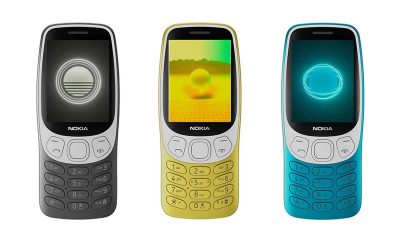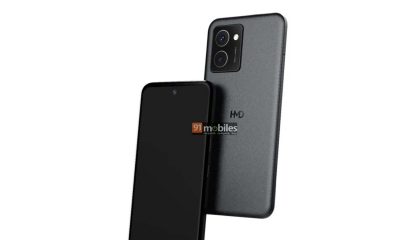Smartphones
HMD announces 1st line of own smartphones
The HMD Pulse collection and HMD Vibe

HMD Global’s new era has finally arrived. The long-time partner of Nokia has released its first line of original Android smartphones, the HMD Vibe and HMD Pulse.
The HMD Vibe will be available in the United States, while the HMD Pulse collection will be sold in international markets. The Finnish smartphone manufacturer positions the Pulse series in particular as “mid-range, affordable phone options” although they are much more affordable than that branding suggests.
HMD Vibe: More bang for your buck
The HMD Vibe houses a Qualcomm Snapdragon 680 processor. It runs on Android 14, supports 4GB of virtual RAM on top of 4GB of base RAM, and has a 128GB internal storage capacity.
It has a 13MP AF main camera, along with a 2MP depth sensor and a 5MP selfie shooter. The phone uses an IPS LCD panel for its 6.56-inch display. This has a 90Hz refresh rate and up to 600nits of brightness.
The HMD Vibe will be available from May at US$ 149 on HMD.com and major retailers like Amazon and Best Buy.
HMD Pulse collection
Meanwhile, HMD’s midrange collection comes in three variants: The HMD Pulse, HMD Pulse+, and HMD Pulse Pro.
All three come in Glacier Green, Twilight Purple, and Black Ocean color variants. All three also come in a sleek, modern design. The rear cameras packaged in a rectangular formation on the upper left and the selfie cameras in a middle punch-hole.
A Unisoc T606 processor powers all phones under the Pulse series. The series-leading Pulse Pro supports configurations of up to 8GB+8GB RAM and 256GB storage. It features a 50MP selfie camera, complementing an identical 50MP rear camera.
On the other hand, the Pulse+ and Pulse both have 13MP main cameras and 5MP selfie shooters which has AI HDR and optimization. The Pulse+ has up to 8GB+8GB RAM and 128GB storage, while the Pulse can support up to 6GB+6GB RAM and the same storage capacity.
All handsets offer up to 59 hours of battery life. The Pro supports 20W of charging, while the other two’s chargers have a lower output at 10W. The only downside for all three is arguably their HD+ display with “just” a 90Hz refresh rate.
The HMD Pulse is priced starting at £99.99 on the HMD website, while the Pulse+ and Pulse Pro are to be made available soon.


“Once is enough, twice is too much” — but that saying doesn’t exist in vivo’s vocabulary.
Just this May 13, 2024, exactly six months after the X100 series‘ November 13 release, the Chinese phone maker announces not just one, but three new flavors to their already superb X100 duo.
X100 Ultra
Fans and naysayers alike all waited for the Ultra variant of the X100 ever since the reveal of the vanilla and Pro models last year.
This not only kills their used-to-be top-of-the-line “Pro+” model (X90 Pro+ to be very specific), it also marks vivo’s first ever Ultra smartphone. They’ve joined forces with the rest of Android smartphone brands pioneered by Samsung, as well as other homegrown brands like Xiaomi, motorola, ZTE, OPPO, and just recently, HUAWEI.

Graphics by Vincenz Lee | GadgetMatch
But what makes the vivo X100 Ultra an “Ultra”? Well, the crème de la crème is its revamped camera hardware.
While it has a similarly-looking eclipse-like camera bump, it has a distinct square-like layout instead of the diamond pattern found on the less-powerful X100 and X100s series.

Graphics by Vincenz Lee | GadgetMatch
Ditching the Sony IMX989 is a newer Sony LYT-900 1-inch main sensor, specifically found on the likes of the OPPO Find X7 Ultra and Xiaomi 14 Ultra.
But the game-changer is none other than the new class-leading 200MP f/2.67 periscope telephoto lens based on the new Samsung ISOCELL HP9 1/1.4-inch sensor — the biggest in any smartphone camera just yet.

That’s with 3.7x optical zoom and a focal length that goes as far as 460mm. vivo even flaunts how it can zoom up to 30x while in video recording mode with ample clarity and image quality retention. While on the topic, it’s also worthy to point out that the vivo X100 Ultra is one among the few smartphones that can shoot 4K in 120fps slo-mo.
Another main feat that makes it even more special is its ZEISS APO floating lens design — which already made its debut on the X100 Pro. Speaking of, ZEISS T* coating plus the signature Biotar, Sonnar, Planar, Distagon, and B-speed ZEISS portrait lens mode all still remain as vivo signifies that their partnership is growing stronger than ever.
Finally, there’s the 50MP f/2.2 ultra-wide lens with a 116-degree FoV (Field of View), as well as a 50MP f/2.45 front camera.

To make it more ultra-packed than ever, vivo also debuts their very own BlueImage technology that incorporates not just its new V3+ imaging chip, but also better image processing algorithms in the long run that will solve most smartphone cameras’ dilemma.
More “Ultra” features under the hood are none other than the class-leading Snapdragon 8 Gen 3 4nm pocessor with Adreno 750 GPU — which is the only X100 model to have it.

Users can opt from either 256/512GB or 1TB storage options (in a speedy UFS 4.0 standard) plus choices between 12 or 16GB of LPDDR5X memory.
The already outstanding 6.78-inch E7 OLED display with 120Hz refresh rate and 2K resolution from the X100 Pro is expected to remain. That’s also with 3000nits peak brightness, pixel density of 517ppi, PWM dimming at 1440Hz, DCI-P3 wide color gamut, HDR10+, and Dolby Vision support.

Moreover, the X100 Ultra packs an even larger 5500mAh battery — 100mAh more than its Pro counterpart. Albeit, a slightly slower 80W wired FlashCharge and 30W wireless FlashCharge speeds (versus X100 Pro’s 100W + 50W protocol).
Lastly, it’s also the very first smartphone to feature a dual IP69 + IP68 rating. It’s also future-proof with Qualcomm’s aptX Lossless wireless audio technology, support for 5.5G connectivity, as well as two-way satellite communication service in Mainland China.
X100s + X100s Pro
Modern day vivo supplies different suffixes for their smartphone line. While their midrange S-line (or V globally) has “e”, their budget-friendly Y-line has “t” and “i”, there’s “s” in their flagship X-series.

The “s” branding might mean “super”, “slightly tweaked” or “somewhat improved”, but the new X100s and X100s Pro have truly brought improvements to the table over its predecessors.

Graphics by Vincenz Lee | GadgetMatch
One of the key differences between the base and the Pro variants of the X100s are its form factor.
To put it in simpler terms, the vanilla variant has flat edges and display. Meanwhile, the Pro, like recent “Pro” Android flagships, has slight curves around its display and curved edges for better hand feel.

Graphics by Vincenz Lee | GadgetMatch
Still, the display size is similar with a changed tech compared to its Ultra sibling: 6.78-inch 1.5K 8T LTPO display with an adaptive 120Hz refresh rate, 3000 nits of peak brightness, and 2160Hz PWM dimming.

vivo has even managed to make the base X100s even thinner — from the 8.8mm of X100 down to just a merely 7.8mm thin!

Graphics by Vincenz Lee | GadgetMatch
Battery and charging are slightly tweaked as well. The X100s has a 5100mAh battery while its Pro sibling shares the bigger 5400mAh battery like the X100 Pro. Both have 100W wired FlashCharge support but only the X100s Pro supports wireless charging of up to 50W.

Graphics by Vincenz Lee | GadgetMatch
What the two models have in common is having an improved MediaTek Dimensity 9300+ 4nm processor with Immortalis-G720 graphics that promises increased CPU and GPU performance with less energy consumption compared to the last generation.

Graphics by Vincenz Lee | GadgetMatch
As for its camera system, both phones share the same as the X100 — all with the ZEISS goodies. The only difference is that the X100s uses V2 imaging chip while the X100s Pro uses the newer V3 chip like its X100 Pro counterpart.

As expected, all models run OriginOS 4 based on Android 14. The special SLR-like camera UI are all available on the three models as well.
Pricing and Availability

Graphics by Vincenz Lee | GadgetMatch
The vivo X100 Ultra and X100s Pro are available in Titanium, White Moonlight, and Darkness of the Night (Black) colorways.

Graphics by Vincenz Lee | GadgetMatch
Meanwhile, the vanilla X100s has unique Deep Space Ash and Blue Cloud offerings aside from the usual Titanium and White Moonlight.
Configuration and respective prices of each model are as follows:
- 12+256GB = CNY 3999 (US$ 553 / EUR 515 / GBP 443 / SG$ 750 / PhP 31,745 / INR 46,196)
- 16+256GB = CNY 4399 (US$ 609 / EUR 567 / GBP 487 / SG$ 826 / PhP 34,921 / INR 50,817)
- 16+512GB = CNY 4699 (US$ 650 / EUR 605 / GBP 521 / SG$ 882 / PhP 37,302 / INR 54,282
- 16+1TB = CNY 5199 (US$ 719 / EUR 670 / GBP 576 / SG$ 977 / PhP 41,272 / INR 60,058)
- 12+256GB = CNY 4999 (US$ 691 / EUR 644 / GBP 554 / SG$ 938 / PhP 39,684 / INR 57,748)
- 16+512GB = CNY 5599 (US$ 775 / EUR 721 / GBP 620 / SG$ 1050 / PhP 44,447 / INR 64,679)
- 16+1TB = CNY 6199 (US$ 857 / EUR 798 / GBP 687 / SG$ 1163 / PhP 49,211 / INR 71,610)
- 12+256GB = CNY 6499 (US$ 900 / EUR 835 / GBP 718 / SG$ 1218 / PhP 51,687 / INR 75,122)
- 16+512GB = CNY 7299 (US$ 1010 / EUR 937 / GBP 807 / SG$ 1367 / PhP 58,049 / INR 84,370)
- 16+1TB = CNY 7999 (US$ 1107 / EUR 1027 / GBP 884 / SG$ 1499 / PhP 63,616 / INR 92,461)

In collaboration with SmallRig, vivo offers an optional SLR-like accessory for the X100 Ultra that costs as little as CNY 399 (US$ 55 / EUR 51 / GBP 44 / SG$ 75 / PhP 3173 / INR 4612).
Pre-orders for vivo’s newest flagship phones start today. The X100s and X100s Pro go on sale on May 17 while the X100 Ultra will be on the 28th.

Graphics by Vincenz Lee | GadgetMatch
Just like any other Chinese phone announcement, there’s no word on global availability. Still, we are hoping vivo would at least bring the X100 Ultra outside China to make way for a very competitive list of “Ultra” smartphones. After all, they’re the official partner of the 2024 UEFA EURO Cup hosted by Germany.

Infinix wasn’t playing around when it released the NOTE 40 series. We got not just one, two, nor three, but four models under this new lineup, as Infinix continued to offer affordable gaming smartphones to its audience. It also featured the revitalized AllCharge FastCharge 2.0.
Together with my nephew, a MiHoYo video game lifer, we chronicled a week-long experience of how the Infinix Note 40 Pro withstood — and passed with flying colors — an extensive gaming test.
But first, specs:
- MediaTek Helio G99 Ultimate chipset
- XOS 14 based on Android 14
- 12GB+12GB RAM
- 256GB internal storage
- 6.78-inch 3D curved AMOLED display
- 120Hz refresh rate, 1,300 nits peak brightness
- 108MP f/1.8 main camera, 2x 2MP cameras, 32MP selfie camera
- 5,000mAh battery
- 70W All-Round FastCharge 2.0
- 20W Wireless Magnetic Charging
Built to endure
My nephew downloaded three of MiHoYo’s popular titles: Honkai: Star Rail, Honkai: 3rd Impact, and Genshin Impact. What better time to play the last title too, looking back, as version 4.6 went live over the weekend. From the get-go, the NOTE 40 Pro delivered flamboyantly.
My nephew played Genshin Impact first, all while having the other titles download in the background. That’s how capable the gaming phone is.
The dedicated gaming mode allows you to tinker with several settings, like block notifications to focus on your gaming. You can also switch between balanced or performance mode, which will allow the phone to have the CPU and GPU work hand-in-hand and distribute the workload in a balanced manner.
Technically the variant above the base model, the NOTE 40 Pro handled Genshin Impact‘s medium graphic settings well, and didn’t flinch even when it got to busy clashes. It showcased the characters’ attack effects smoothly, move after move.
The following day, my nephew decided to open Honkai: 3rd Impact. While he was able to play without too much disturbances, he noted how the phone had a difficult time when the title is put to high graphics. But that was understandable.
This game is just that demanding. The same problems can be experienced even when using PCs. There were just a few instances where the phone experienced frame drop while in-game, but good thing there’s XBOOST Frame Rate Control to mitigate it.
Finally, he switched from one game to another in the following days. And he also luckily got Arlecchino in Genshin Impact once the update went live.
With the open-world RPG, the gaming experience was still generally smooth even after an hour of gameplay, making the NOTE 40 Pro ideal for long grinds. My nephew noted how encouraging the experience is as a sign for the Helio G99 Ultimate processor under the phone’s hood. It definitely enabled the NOTE 40 Pro to exceed expectations.
Aside from its reliability and toughness for gaming, here are other things we loved about the Infinix NOTE 40 Pro:
70W All-Round FastCharge 2.0
Aiding the NOTE 40 Pro is Infinix’s much improved charging technologies. Users may choose between three charging modes when the device is already plugged in: Low-Temp, Smart, and Hyper. Hyper mode charges the phone in the lowest time possible.
We didn’t have to charge it every day. In our experience, it look under an hour to charge from 15% to full, and about 30 minutes from 50% to 100% on average.
It gets hot when under Hyper mode, but not too concerning. Fortunately, the phone disconnects automatically when it reaches 100%. That’s even if it’s still plugged in. I noticed this firsthand, where the phone stopped absorbing power and wasn’t hot anymore.
Only the adapter was still absorbing power. That’s a nice feature to have just in case you forget to unplug it right away or should you get distracted. By default, and just to save on your electric bill, make sure you remove the charger from the outlet once you’re done using it.
Nevertheless, if you want to buy more time or want to feel “safer,” the other two modes are there. I hardly used the 20W magnetic charging plate. But just to test it once, the phone took more than 90 minutes to charge to half full. When in-game, bypass charging gives the phone extra juice but it won’t charge the battery itself, so you’re safe from overheating.
Upper midrange feel
Elsewhere, the phone has a neat OS that looks and feels fine. I like how Infinix didn’t load it with bloatware, giving it an upper midrange feel in spite of the very affordable price point. The handset’s appearance is likewise a level up. At the back, there is a ring light (called Active Halo) instead of a traditional flash.
This also illuminates for additional style points. My only gripe is that the phone’s backside is slippery. But the magnetic charging case actually doubles nicely to give it a leathery finish. When the phone is slotted into the case, it feels perfect to hold. Not too thick nor thin, and just comfortable.
In front, the NOTE 40 Pro also has a 3D Curved 120Hz AMOLED display to complement the gaming experience. Even when you’re not busy with various titles, any content you consume will have a clearer, more vivid look. As the phone’s sound is also supported by JBL, it comes out with better bass and more impactful sound that’s likewise best for gaming or streaming.
Camera package: Surprisingly good
This Infinix offering also boasts of a 108MP main camera. I was actually surprised at how pictures of food and landscapes came out with good color and quality.
Yes, it’s not as high-end as what you’ll get from flagships, but the results are still a level up from typical budget smartphones. Color temperature is on the warmer side, while colors lean toward more saturation.
Reds and oranges appear intense, which can be good for food and landscapes. At the very least, you’re assured of captures that aren’t dull.
I took most shots using the AI main camera, which does well in detecting the scenes. Unless I intended to use another mode, the default shooter sufficed. I am even more impressed by the portrait mode.
Transition between blurred and non-blurred parts is smooth, and the bokeh effect looked natural. It elevated some subjects more. Of course, you’ll get some results where it didn’t appropriately blur some parts.
Night mode is decent, too. You get brighter captures on scenes under low-light compared to what you saw with the naked eye. The results aren’t noisy, either.
Selfies are just alright, with some balance between detail and smoothness. Naturally, since this is a budget phone, it kind of gave up after an hour of shooting. There were instances where it didn’t capture images even if I repeatedly pressed the shutter.
But with what I’m getting for its camera package, it’s a great bonus.
Final thoughts: Guaranteed tough for gaming
Even if you’re not a gamer, you’ll absolutely appreciate what the Infinix NOTE 40 Pro can bring to the table. For PhP 9,999, you get an all-around phone that delivers reliable performance and allows you to elevate the overall usage experience. You get a capable camera, ample memory and storage, and generally smooth performance.
If you’re a gamer, this is an absolute steal. From its design that puts it right up there with flagship level devices, along with its tough performance even when we played the most RAM-demanding titles and set other games to higher graphic settings, Infinix made sure this device wasn’t just all for show.
With the Infinix NOTE 40 Pro, you’ll wield a budget phone that is not budget-level at all. Guaranteed.
The Infinix NOTE 40 Pro retails for an introductory price of PhP 9,999, exclusively on Shopee.
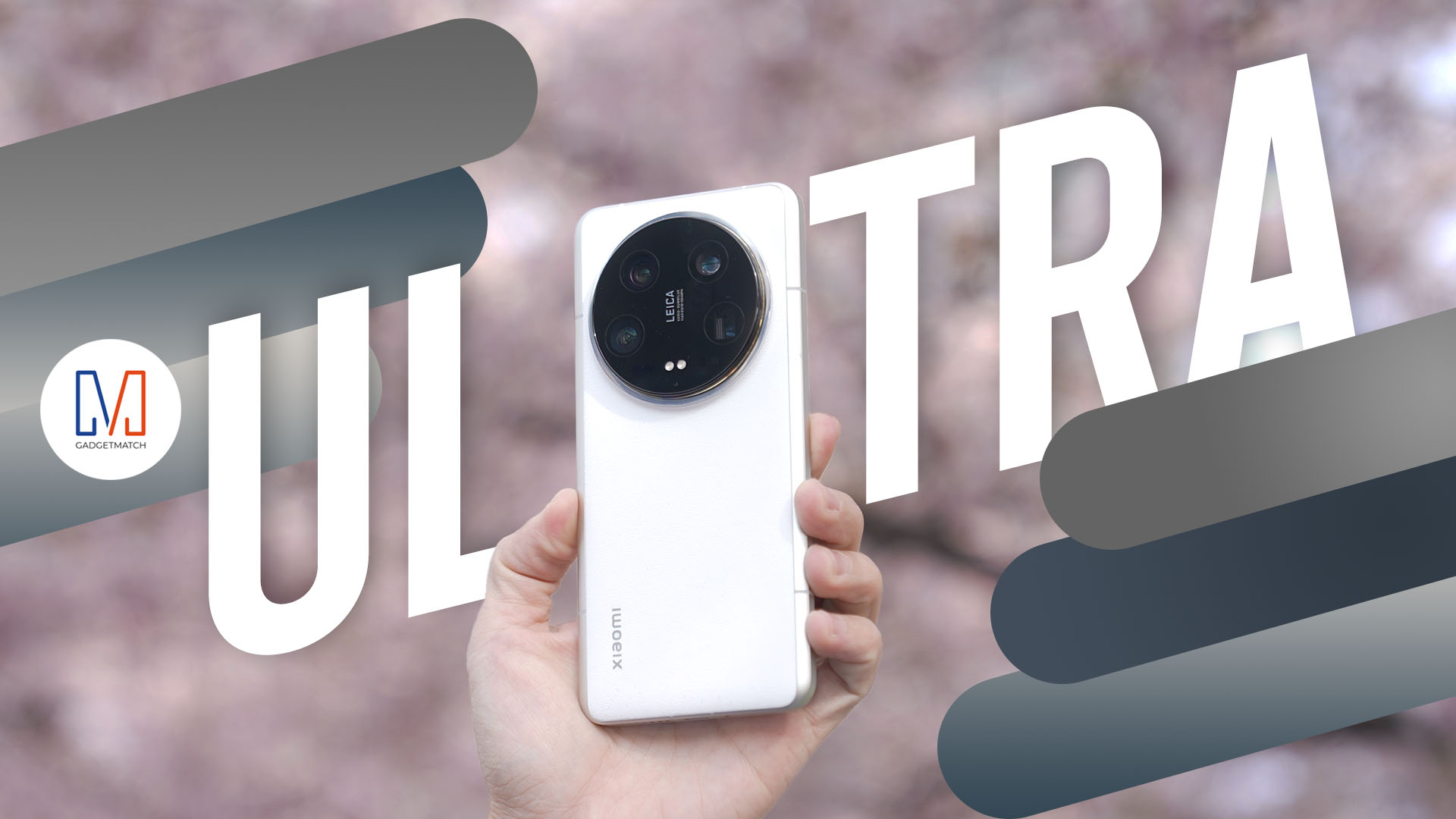
It is almost guaranteed that the best flagship smartphones you can buy today have nothing less than their excellent cameras.
But Xiaomi not only wants to take smartphone photography up a notch, their approach is unlike anything we’ve seen before.
This is our Xiaomi 14 Ultra Review!
-
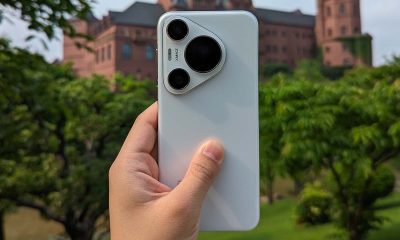
 Smartphones2 weeks ago
Smartphones2 weeks agoHuawei Pura 70 Pro Unboxing and First Impressions
-
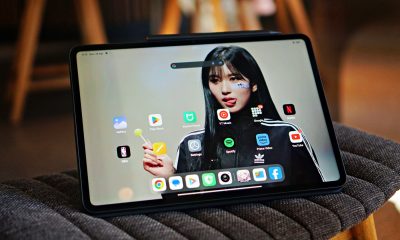
 Reviews2 weeks ago
Reviews2 weeks agoXiaomi Pad 6S Pro 12.4 review: Bigger and better
-
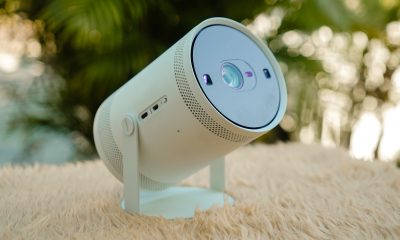
 Convenient Smart Home2 weeks ago
Convenient Smart Home2 weeks agoI swear, Samsung’s The Freestyle spells freedom
-
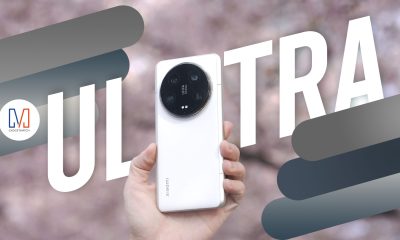
 Reviews5 days ago
Reviews5 days agoXiaomi 14 Ultra Review: The Ultimate Camera Smartphone
-

 Gaming2 weeks ago
Gaming2 weeks agoThere’s a new Batman Arkham game coming
-
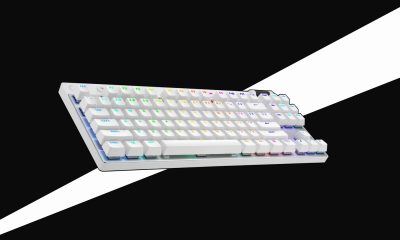
 Accessories2 weeks ago
Accessories2 weeks agoLogitech announces G PRO X TKL gaming keyboard
-
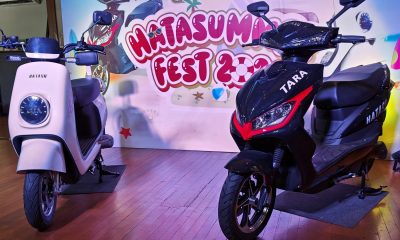
 Automotive2 weeks ago
Automotive2 weeks agoHATASU ebike announces latest 2-wheeler
-
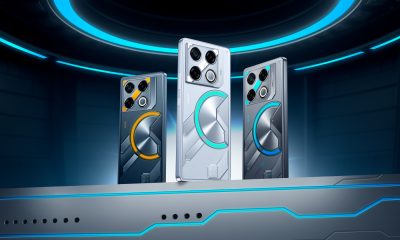
 Smartphones2 weeks ago
Smartphones2 weeks ago‘Esports-level’ Infinix GT 20 Pro now official



